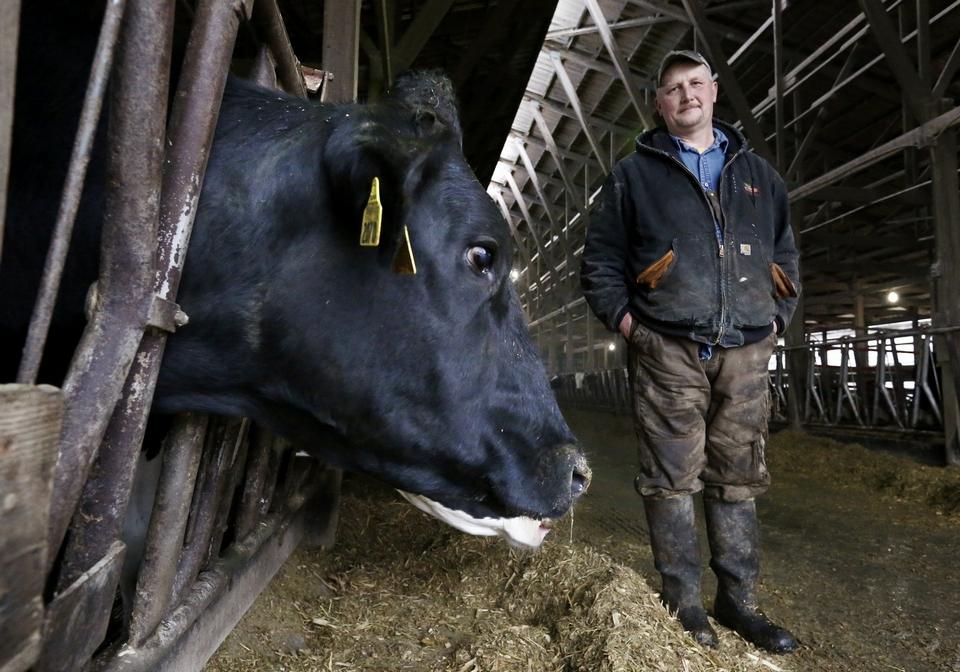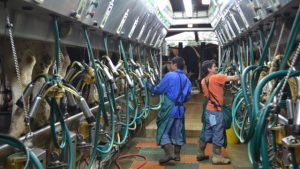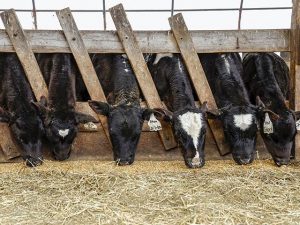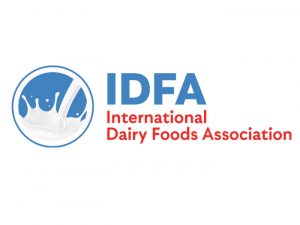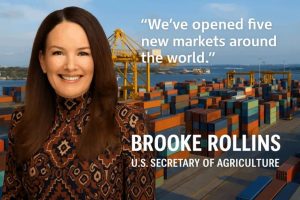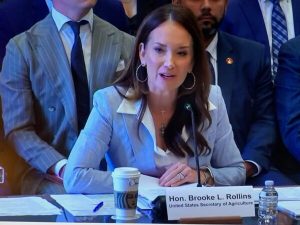
“We almost never had milk here, and if we did, it was expired,” said Sweeney, a volunteer at the Holy Family Church pantry. “This has almost two weeks left. It’s wonderful.”
Almost all of the families served at the pantry Thursday asked for one or more half-gallons, and Sweeney was happy to oblige. The state’s network of food banks is awash in the nutritional powerhouse, with so much milk flowing into the system that the Ohio Association of Foodbanks is fundraising to help cover extra distribution and refrigeration costs.
But the boon isn’t a reflection of good times for the dairy industry. Pantries in Ohio and elsewhere have lots of free milk because the federal government is buying some $50 million worth of it off the market and, for the first time, making it available through the Emergency Food Assistance Program.
The U.S. Department of Agriculture says the purchase is separate from broader trade-mitigation payments that are providing financial assistance to farmers ensnared in the Trump administration’s trade disputes that have disrupted export markets and led to tariffs on many U.S. agricultural products.
Even before they were caught in a trade war, dairy farmers had been struggling under low prices and vast supply.
“You can’t just lose money every day,” said Scott Higgins, CEO of the Ohio Dairy Producers Association. He said the state has seen about 10 percent of its 2,200 dairy farms shut down in the past year.
Rob Bouic, whose family’s roots in farming go back more than 100 years, doubts his kids will stick with the dairy side. The Bouics have a herd of 120 cows and about 1,200 acres for corn and soybeans. The government payment he received for soybeans is propping up his dairy operation.
“Short term, about all you’ve got is government intervention,” said Bouic, of Milford Center in Union County, about 30 miles northwest of Columbus. “Long term, we need as much open trade as possible.”
The 51-year-old has managed his family farm since 1990, doing a lot of what he calls treading water. “We haven’t had a lot of good years,” Bouic said. “And 2018 is the worst.”
Still, Higgins said, supplying milk for the poor is a bright spot for the industry, one he hopes the government will maintain even after trade issues are resolved.
“Our families and children need good nutrition, in good times and when they find themselves in hard times,” Higgins said. “We’re serving a need in our communities, while also trying to sort our way through these trade wars.”
Fresh milk never had been among the many food products purchased under Section 32, the U.S. Department of Agriculture’s long-standing surplus-commodity program. Emergency food sites might have access to items as varied as cranberries and canned salmon through the program, but not liquid milk.
“For as long as I can remember, food banks have been saying, ’We wish we had access to milk,‴ Higgins said.
When they did, it usually was due to a retail purchase or donation.
Now, the Southeast Ohio Foodbank in Logan has “more milk than I’ve ever seen in my life,” said David Keller, development coordinator for the Hocking Athens Perry Community Action Program. “This time last year, we were receiving zero gallons.”
The windfall presents logistical challenges. Some food banks are renting refrigerated trailers while pantries work to get the word out. One preschool program for low-income kids is offering take-home milk for families.
“We are so grateful to have it, but because of the very short shelf-life, we knew we’d have to get very creative,” said Lisa Hamler-Fugitt, executive director of the Ohio Association of Foodbanks. “It’s gotta move fast, so it’s required our food banks to be more of a push system.”
Mareious Killestadt left the Holy Family pantry with fresh milk earlier this week. At age 44, he said it still feels like a luxury.
“I grew up on the dry milk, and it wasn’t fun,” Killestadt said. “Not even for your cereal.”
